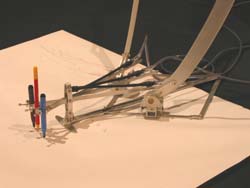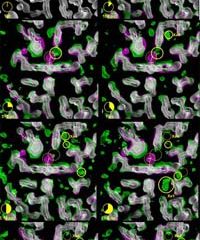News and developments from the field of interdisciplinary research.
Among other topics, you can find stimulating reports and articles related to microsystems, emotions research, futures research and stratospheric research.

A bold paper which has highly impressed some of the world´s top physicists and been published in the August issue of Foundations of Physics Letters, seems set to change the way we think about the nature of time and its relationship to motion and classical and quantum mechanics. Much to the science world´s astonishment, the work also appears to provide solutions to Zeno of Elea´s famous motion paradoxes, almost 2500 years after they were originally conceived by the ancient Greek philosopher. In doi

The UK Analytical Partnership (UKAP), now in its third year, has announced five prime areas for analytical innovation: biomimetic analysis, health sensors, managing the chemical environment, real-time analysis/factory of the future and analysis in design. UKAP will be staging a number of events in the autumn to enable input from parties interested in involvement with these projects.
Richard Bahu of the Oxis Partnership, co-author of this foresight study for UKAP´s Innovation Network w

From 16 to 31 July, 32 international student teams of researchers will gather in Bordeaux, France, to fly their experiments in zero-gravity on board a specially adapted Airbus A-300.
This year’s Student Parabolic Flight Campaign, organised by ESA’s Education Office, will see experiments performed in a variety scientific areas including physics, human biology, material science and robotics, some using objects as diverse as jelly and moths.
Four flights in two

Working from their university labs in two different corners of the world, U.S. and Australian researchers have created what they call a new class of creative beings, “the semi-living artist” – a picture-drawing robot in Perth, Australia whose movements are controlled by the brain signals of cultured rat cells in Atlanta.
Gripping three colored markers positioned above a white canvas, the robotic drawing arm operates based on the neural activity of a few thousand rat neurons placed in a spec

A team of scientists from the USA in collaboration with staff at the European Synchrotron Radiation Facility (Schotte et al) have managed to film a protein at work in unprecedented detail. The protein is the oxygen-storing molecule myoglobin, which plays a central role in the production of energy in muscles. The motion of the protein was recorded using ultra-short flashes of X-ray light from the synchrotron. The new insight in the functionality of myoglobin has led to a deeper understanding of the m

Biodegradable scaffold significantly increases the rate of bone healing
University of Toronto scientists have developed a biodegradable scaffold, similar in structure to a dish sponge, that significantly speeds the rate of bone healing.
The material, developed by an interdisciplinary team with expertise in engineering, biology, chemistry and dentistry, provides a building scaffold for bone growth. The scaffold, which eventually dissolves, increases healing rates and offers